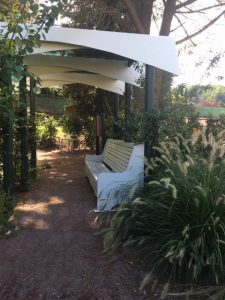Vibroacustic therapy
During the last years a new way to use music and sounds like vibrations as a therapeutical tool has started to spread. This non pharmacological treatment is addressed to patients with neurovegetative diseases or with different types of cognitive disabilities.
Vibroacustic therapy consists in a massage made by vibrations. It is able to reduce pain and discomfort, improving the quality of life of people who make use of it. This kind of treatment, that use sinusoidal tone vibrations at pulsed frequencies, was first studied in Norway, Finland, Sweden and then in the rest of the word. Oval Skille, one of the fathers of vibroacustic therapy, claims to have found benefits for a lot of diseases such as neurological ones (cerebral palsy, multiple sclerosis, Parkinson’s disease), rheumatic and orthopedic diseases (sports injuries, lumbar pains), psychiatric diseases (stress, insomnia, depressive states), autism, and also for intestinal constipation and circulatory disorders.
In Italy, Music Teacher Riccardo Della Ragione has developed the Magic Music Method (MMM) which combines synergistically music therapy with vibroacustic therapy.
 Vibroacustic therapy was created to give to the body the complete benefit from the sound. In this sensorial stimulation, the sound and the music are seen as ways to open communication channels, increase creativity, develop relational skills, and help for the processing of experiences. Everyone, even those ones who have never received any musical teaching, in fact has his own experience that can be awakened throw the music; this experiential baggage inside everyone become material for the music-therapist’s work. Therefore each person is a person rich of potential to activate, hope to feed, wishes to be respected.
Vibroacustic therapy was created to give to the body the complete benefit from the sound. In this sensorial stimulation, the sound and the music are seen as ways to open communication channels, increase creativity, develop relational skills, and help for the processing of experiences. Everyone, even those ones who have never received any musical teaching, in fact has his own experience that can be awakened throw the music; this experiential baggage inside everyone become material for the music-therapist’s work. Therefore each person is a person rich of potential to activate, hope to feed, wishes to be respected.
MMM was the subject of clinical studies developed by the Institute of clinical physiology of the National Research Center (CNR) in Pisa. After 20 years of research trainings were developed to transfer to others this new methodology that combines the listening of the music and the physical stress of the sound.
Most of us don’t know that we can receive music and sound even through the body. Vibroacustic therapy, on the contrary, is ground precisely on this insight.
This therapy needs a chaise longue or a bench like those positioned in sensorial gardens. The sound is transferred in form of vibration. Given that our body is composed for the most part of water, it is a perfect transmitter of sound vibrations. The vibrational energy, activating the movement of molecules, generates a kind of massage both inside and outside. All the system is provided in a kit composed by a chair, or a bench, a cd player, an amplifier, a speaker to diffuse the music in the environment.
The music proposed must be previously selected by the therapist who leads the session following a specific protocol. The person is always accompanied during the session and if some discomfort comes up, the treatment is interrupted. During the treatment the expert stays in contact with the person and asks feedback about sensations. Each session is from 20 to 40 minute long and it can be a relaxing or an activating session. Especially during the first session, it is very important what the expert observes.
This kind of non-pharmacological therapy is used with people with Parkinson, depressive symptoms, and with people with dementia because it can reduce behavioral disorders; improve the relationship between family member, the staff and the patient. Overall, it promotes a more human contact, peaceful and harmonious.
